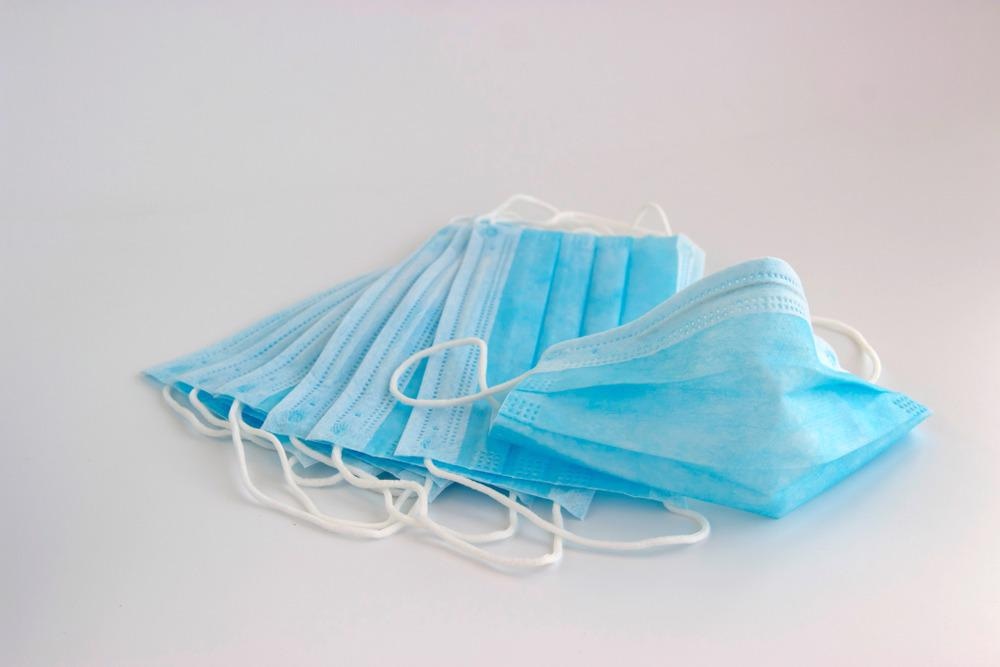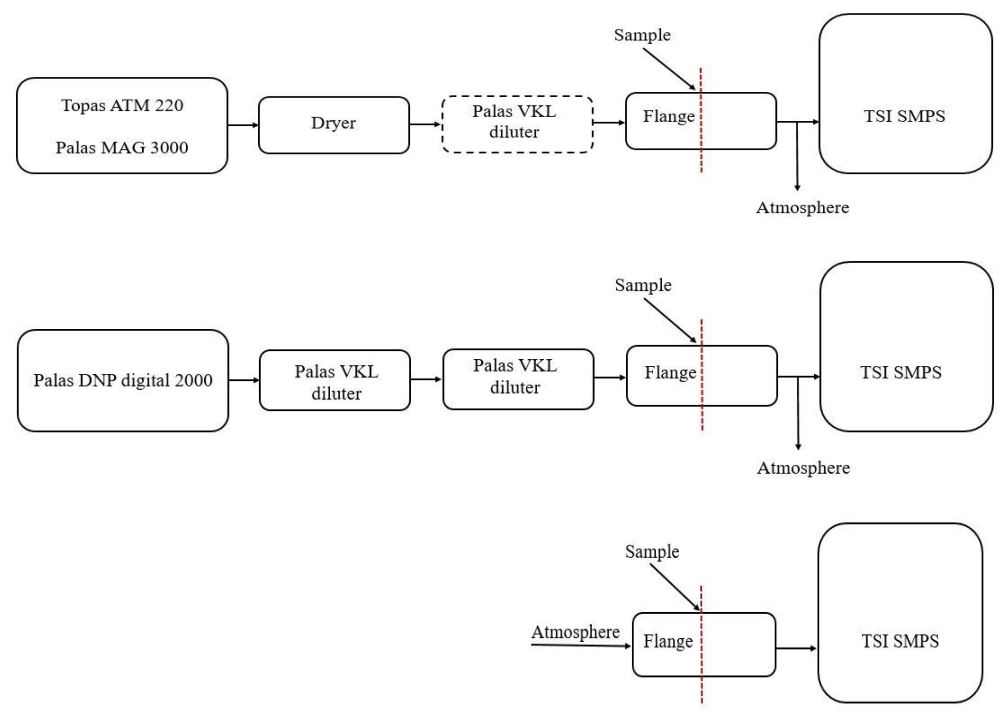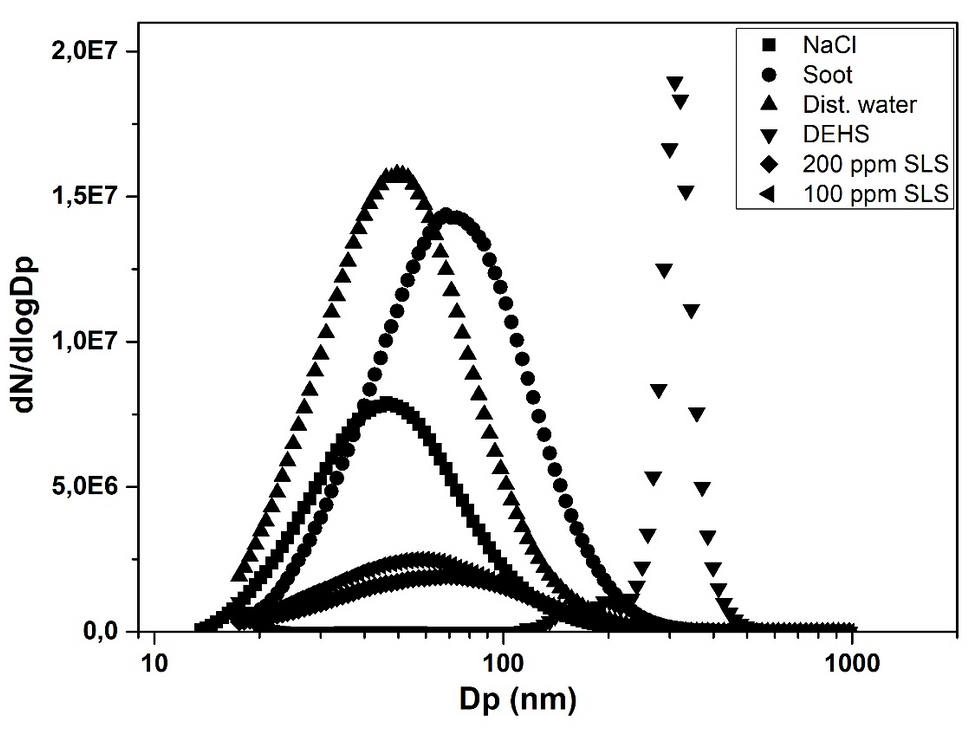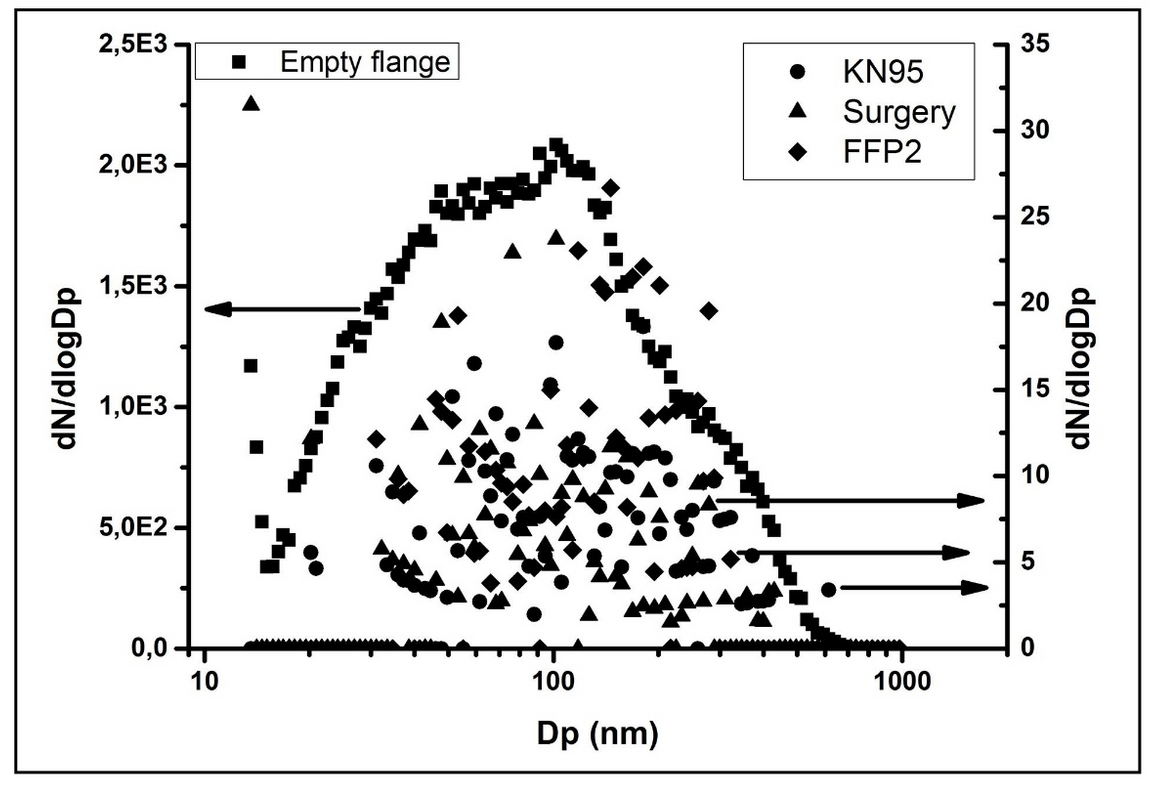.jpg) By Susha Cheriyedath, M.Sc.Reviewed by Skyla BailyFeb 3 2022
By Susha Cheriyedath, M.Sc.Reviewed by Skyla BailyFeb 3 2022Researchers from the University of Szeged, in their latest article posted to the Research Square preprint* server, evaluated the chemistry, diameter, topology, and other physical qualities of the most common face ventilators and surgery masks using diverse aerosol emitters in the micrometer size range.

Study: Some Consideration About Mask Penetration: Influence of Material Properties, Particle Size and its Morphology As Well As Particle Physical Quantities. Image Credit: ToKa74/Shutterstock.com
Impact of Coronavirus
The contemporary coronavirus illness (COVID-19), induced by the SARS-CoV-2 virus, was activated at the end of 2018 and has spread over the world in a matter of months. As a result of the COVID-19 epidemic, numerous nations implemented harsh lockout measures, including physical and social distance rules advocated or implemented by their national health agencies and governments.
The basic mechanisms of viral transmission are person-to-person contact and contacting infected surfaces. Rapid dissemination of respiratory secretions and salvia, including virus, over meters, is also crucial. However, other alternate tracking methods, such as airborne transition, can also play a role in viral propagation.
Despite its relevance, however, the associated specifics of transitional techniques and effectiveness, as well as the performance of respiratory and surgical mask usage, have not yet been fully established.

Experimental set-up for filtration efficiency measurement of different sample materials: (a) the experimental set up using two type of liquid nebulizer to generate, NaCl, DEHS, distilled water and paraffin oil aerosols, (b) experimental set-up for generating spark discharged soot aerosol assembly, (c) experimental set up for ambient relevance measurement of filtration efficiency. Image Credit: Ajtai, T. et al., Research Square
Respiratory Droplet Size
The respiratory aerosol transition often has a diameter of 5 m or greater. The fluid dynamics dictate the transition monitoring in this regime to a large extent. However, such particles have a brief lifespan in the environment. As a result, in addition to direct inhalation, the shift occurs via adsorption of virus-containing respiratory secretions on surfaces, which is prevalent in this regime.
The virus, with its distinctive sizes of roughly 200 nm, may be conveyed by itself in airborne transition. It can also be conveyed by the adhesion of solid or liquid particles distributed in the air. The submicron area is also important in airborne transition.

Size distribution of different aerosol sources drawn through the flange without filter material. Image Credit: Ajtai, T. et al., Research Square
Importance of Facemask in Coronavirus Prevention
In addition to physical separation and hand cleanliness, employing a facial mask is recommended and mandated by national health agencies and legislative administrations in many countries to reduce COVID-19 spreading.
The surgical mask is certified by numerous test techniques, such as European standard EN 14683, and the filter face respirators are certified by EN 149 (FFP respirators series) and 84.171. (KN respirator series). These are typically suggested for healthcare practitioners to wear.
In most nations, a basic cotton mask with uncertain filtering efficacy is the bare minimum for broad public use. However, this was mostly due to the solid conviction in its better filtering effectiveness, as well as the large demand for medical masks or face respirators during the first few months of the pandemic era, which produced a supply scarcity. It is also worth noting that, probably as a result of mask use, the majority of medical contacts related to lung disorders have fallen considerably during the COVID-19 pandemic period.
Aerosol Removal Techniques
Aerosol removal from an airstream is primarily governed by five physical mechanisms: gravity settlement, interior obstruction, absorption, dispersion, and electrostatic interaction. They all demonstrate size dependence. The first two are more effective in particle settling towards smaller sizes, but the subsequent three demonstrate improving efficiency as particle size increases.
Furthermore, the test methodologies for surgical or face respiratory protection do not indicate purification process size dependence but rather a cumulative efficiency. As permeation can be affected by other physical parameters such as viscosity, interfacial tension, the shape of the nanoparticles, a more thorough examination of filtration efficiency, even in a submicrometric size field, is a current issue of global epidemic or more exhaustive curiosity today.

Measured size distribution of different samples for airborne aerosols. Image Credit: Ajtai, T. et al., Research Square
Research Findings
The analysis of morphological structure was made possible by using NaCl particles, which are the most important aerosol criteria for assessing filtering efficiency, and the spark release created soot aerosol. The filtration effectiveness of the compacted sharped layer bordered NaCl aerosol is comparable to that of soot particles.
To represent more accurate physical properties of respiratory fluids or salvia, the distilled water aerosol origin was employed. All of the tested masks or respiratory composites demonstrated good filtering effectiveness for water aerosol. The observation of particle transitions produced by distilled water and SLS mixing at various SLS blending rates reveals a clear surface tension dependence on filtering.
Higher filtering effectiveness was achieved with SLS concentrations of 100 ppm and 200 ppm, which accurately mimicked the true surface tension state of salvia. The filtering performance of surgical and face masks is largely dependent not only on the content of the particle parameters but also on their phase and other microphysical factors. As a result, further research on the pandemic significance of its use, as defined by the simulated aerosol criteria and monitoring methodologies, is required.
*Important Notice
Research Square publishes preliminary scientific reports that are not peer-reviewed and, therefore, should not be regarded as conclusive or treated as established information.
Further Reading
Ajtai, T. et al., 2022. Some Consideration About Mask Penetration: Influence of Material Properties, Particle Size and its Morphology As Well As Particle Physical Quantities. Reserach Square. Available at: https://www.researchsquare.com/article/rs-1276513/v1.
Disclaimer: The views expressed here are those of the author expressed in their private capacity and do not necessarily represent the views of AZoM.com Limited T/A AZoNetwork the owner and operator of this website. This disclaimer forms part of the Terms and conditions of use of this website.